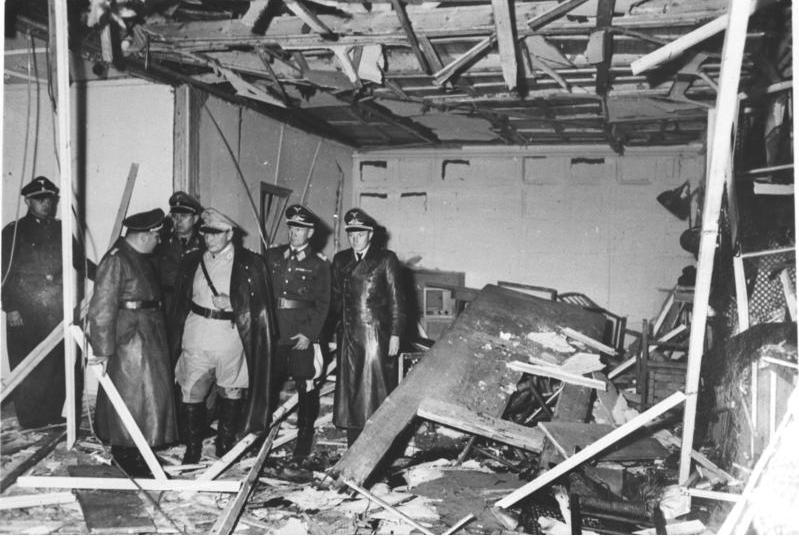Video: 'The Hitler Bomb Plot Unsuccessful Attempt On Fuhrer's Life (1944)'
(Thursday, July 20, 1944, 12:42 p.m. Central European Summer Time; during the 20 July plot, part of World War II) — Adolf Hitler narrowly escaped an assassination attempt this afternoon at the Wolf’s Lair, the Nazi leader’s first Eastern Front military headquarters during World War II, located in East Prussia.
The attempt on Hitler’s life was orchestrated by Claus von Stauffenberg and other conspirators within the German military.
Stauffenberg personally brought a briefcase filled with explosives to a conference at the Wolf’s Lair. The explosives were armed and placed next to Hitler, but were unwittingly moved behind a table leg by Heinz Brandt, inadvertently saving Hitler’s life.
Video: 'Valkyrie: The Plot to Kill Hitler'
When the bomb detonated, it killed Brandt and two others, and injured the rest of the room’s occupants. One of the injured, Rudolf Schmundt, later died from his wounds.
Hitler sustained minor injuries, including singed trousers, a perforated eardrum, and conjunctivitis, but was otherwise unharmed.
Video: 'Operation Valkyrie: The Secret Plot To Kill Hitler | Operation Valkyrie | War Stories'
Stauffenberg then flew to Berlin to execute the next phase of the military coup, known as “Operation Valkyrie.” However, the plan faltered as he was unable to confirm Hitler’s death.
A radio broadcast at 6:30 p.m. reported that Hitler had survived, and the Nazi regime quickly reasserted control over Germany.
Video: 'The World At War 1973 WW2 EP 16 From Bluray: Homefront Germany' (Operation Valkyrie at 41:50)
That night, a few members of the conspiracy, including Stauffenberg, were executed by firing squad. In the months following the failed coup, the Gestapo arrested more than 7,000 people, of whom 4,980 were executed. Approximately 200 conspirators faced execution.
The apparent aim of the coup was to wrest political control of Germany and its armed forces from the Nazi Party, including the SS, and to make peace with the Western Allies as soon as possible.
The specifics of the conspirators’ peace initiatives remain unknown, but they likely included unrealistic demands to confirm Germany’s extensive territorial annexations in Europe.

